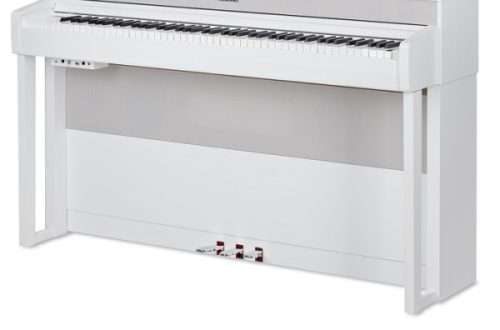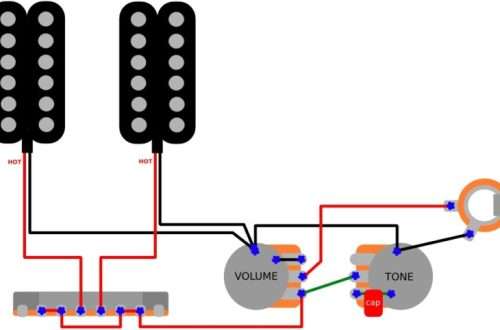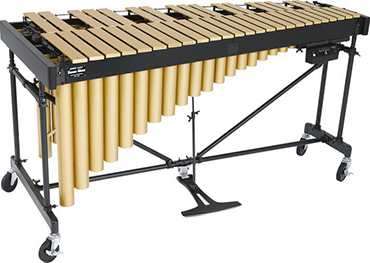Learn notes on the guitar
In order to master any musical instrument, the first thing you need to do is personally feel its range, understand what exactly needs to be done in order to extract this or that note. Guitar is no exception. To play really well, you need to know how to read music, especially if you want to create your own pieces.
If your goal is to play simple yard songs, then of course only 4-5 chords will help you, a couple of simple patterns of strumming and voila – you are already humming your favorite tunes with your friends.
Another question is when you set a goal for yourself to study the instrument, get better at it and masterfully extract mesmerizing solos and riffs from the instrument. To do this, you don’t need to go through hundreds of tutorials, torment the teacher, the theories here are scanty, the main emphasis is on practice.
So, our palette of sounds is located, or rather sharpened, in six strings and the neck itself, the saddles of which set the required frequency of a particular note when the string is pressed. Any guitar has a certain number of frets; for classical guitars, their number most often reaches 18, and for a regular acoustic or electric guitar there are about 22.
The range of each string covers 3 octaves, one completely and two in pieces (sometimes one if it is a classic with 18 frets). On the piano, octaves, or rather the arrangement of notes, are arranged much more simply in the form of a linear sequence. On a guitar it looks much more complicated, the notes, of course, come sequentially, but in the total mass of strings, the octaves are placed in the form of a ladder and they are duplicated several times.
For example:
1st string: second octave – third octave – fourth octave
2nd string: first, second, third octaves
3nd string: first, second, third octaves
4th string: first, second octaves
5th string: small octave, first, second octaves
6th string: small octave, first, second octaves
As you can see, sets of notes (octaves) are repeated several times, that is, the same note can sound on different strings when pressed on different frets. This seems confusing, but on the other hand it is very convenient, which in some cases reduces unnecessary hand sliding along the fingerboard, concentrating the working area in one place. Now, in more detail, how to determine the notes on the guitar fingerboard. To do this, you need to know, first of all, three simple things:
1. The structure of the scale, octave, that is, the sequence of notes in the scale – DO RE MI FA SOLE LA SI (even a child knows this).
2. You need to know notes on open strings, that is, notes that sound on the strings without pressing the string on the frets. In standard guitar tuning, the open strings correspond to the notes (from 1st to 6th) MI SI sol re la mi (personally, I remember this sequence as Mrs. Ol’ Rely).
3. The third thing you need to know is the placement of tones and halftones between notes, as you know, notes follow each other, after DO comes RE, after RE comes MI, but there are also notes such as “C sharp” or “D flat” , sharp means raising, flat means lowering, that is, # is sharp, raises the note by half a tone, and b – flat lowers the note by half a tone, this is easy to understand by remembering the piano, you probably noticed that the piano has white and black keys , so the black keys are those same sharps and flats. But such intermediate notes are not found everywhere in the scale. You need to remember that between the notes MI and FA, as well as SI and DO, there will be no such intermediate notes, so it is customary to call the distance between them a semitone, but the distance between DO and RE, D and MI, FA and sol, sol and la, la and SI will have a distance between them of a whole tone, that is, between them there will be an intermediate note sharp or flat. (For those who are not at all familiar with these nuances, I’ll clarify that one note can be both a sharp and a flat at the same time, for example: it can be DO# – that is, an increased DO or PEb – that is, a lowered RE, which is basically the same thing, that’s all depends on the direction of play, whether you are going down the scale or up).
Now that we have taken these three points into account, we are trying to figure out where and what notes are on our fretboard. We remember that our first open string has the note MI, we also remember that between the note MI and FA there is a distance of half a tone, so based on this we understand that if we press the first string on the first fret we will get the note FA, then FA will go #, SALT, SALT#, LA, LA#, Do and so on. It is most convenient to start understanding it from the second string, since the first fret of the second string contains the note C (as we remember, the first note of the octave). Accordingly, there will be a distance of a whole tone to the note RE (that is, visually, this is one fret, that is, to move to the note RE from the note DO, you need to skip one fret).
To fully master this topic, you need, of course, practice. I recommend that you first create a schedule that is convenient for you.
Take a sheet of paper, preferably large (at least A3), draw six stripes and divide them by your number of frets (don’t forget the cells for open strings), enter the notes in these cells according to their location, such a cheat sheet will be very useful in your mastery of the instrument.
By the way, I can give good advice. To make learning notes less of a burden, it is better when you practice with interesting material. As an example of this, I can cite a wonderful website where the author makes musical arrangements for modern and popular songs. Pavel Starkoshevsky has notes for the guitar that are complex, for more advanced ones, and simple, quite accessible to beginners. Find there a guitar arrangement for a song that you like, and memorize the notes on the fretboard by analyzing it. In addition, tabs are included with each arrangement. With their help, it will be easier for you to navigate which fret to press what on.
The next step for you will be the development of hearing, you must train your memory and fingers so that you clearly remember by ear how this or that note sounds, and the motor skills of your hands can immediately find the note you need on the fingerboard.
Musical success to you!




